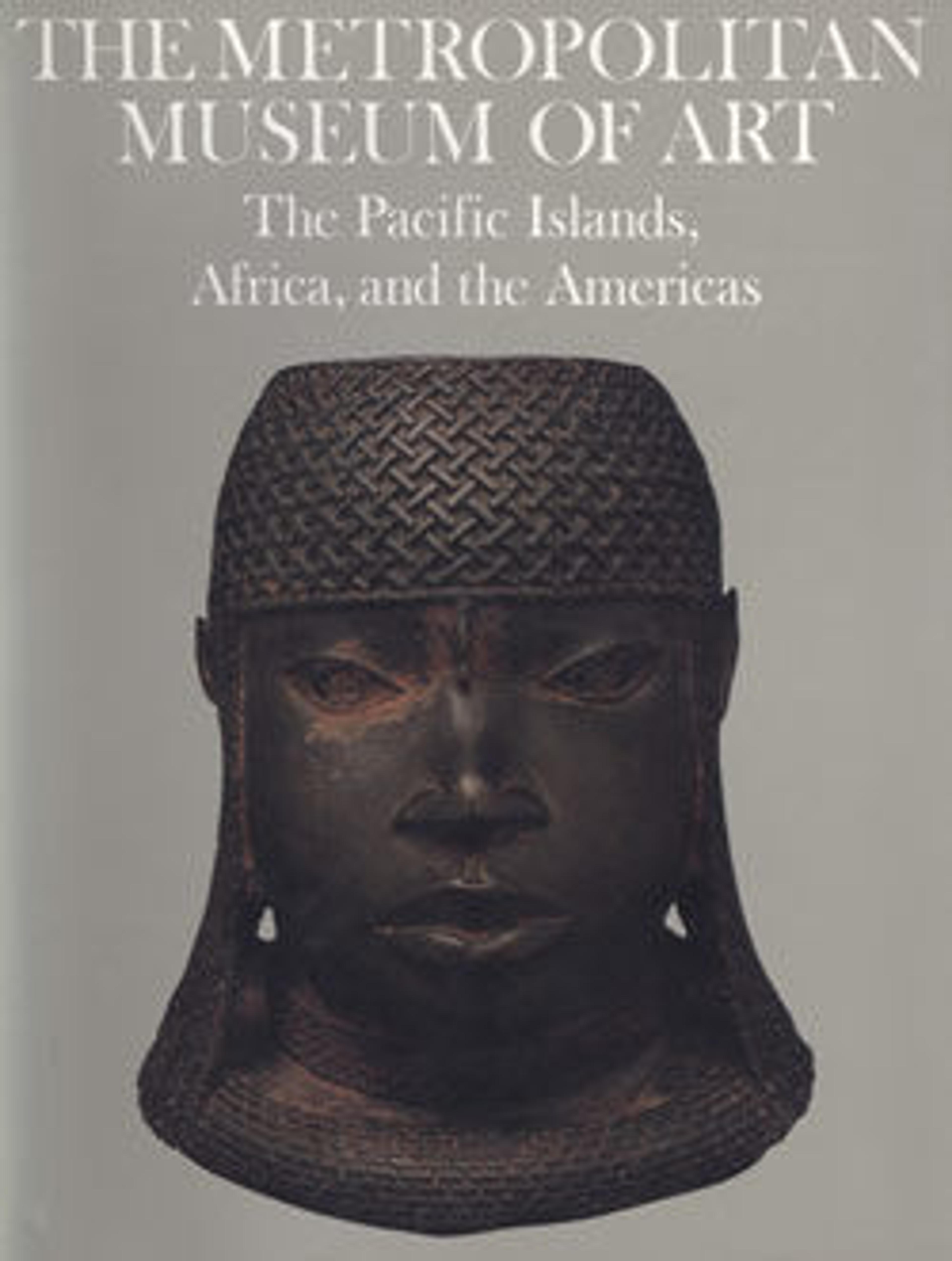Stirrup-spout bottle with seated figure
The stirrup-spout vessel—so named for the similarity of the spout form to that of a riding saddle stirrup—was a much-favored bottle shape in Precolumbian Peru. It has been suggested that the peculiarity of the double-branch/single-spout shape was to prevent evaporation of the liquids it contained. The stirrup spout was used on ceramic vessels in northern Peru for about twenty-five hundred years. Early in the first millennium BCE, the stirrup-spout bottle was elaborated into sculptural depictions of a wide range of visual phenomena. The human figure appeared among them in many roles and guises, some seemingly "everyday" in aspect, while others were of a more noticeably ritual or sacred character.
The figure wears a headdress that has a small feline face at the center. Such animal-fronted headdresses were commonly depicted in Moche art. They are believed to have been emblematic of rank or profession. This figure may originally have had inlaid eyes and more ornaments on its nose, ears, and wrists.
The figure wears a headdress that has a small feline face at the center. Such animal-fronted headdresses were commonly depicted in Moche art. They are believed to have been emblematic of rank or profession. This figure may originally have had inlaid eyes and more ornaments on its nose, ears, and wrists.
Artwork Details
- Title:Stirrup-spout bottle with seated figure
- Artist:Moche artist(s)
- Date:200 CE–500 CE
- Geography:Peru
- Culture:Moche
- Medium:Ceramic
- Dimensions:H. 6 3/8 × W. 4 1/2 × D. 6 1/2 in. (16.2 × 11.4 × 16.5 cm)
- Classification:Ceramics-Containers
- Credit Line:Gift of Henry G. Marquand, 1882
- Object Number:82.1.30
- Curatorial Department: The Michael C. Rockefeller Wing
More Artwork
Research Resources
The Met provides unparalleled resources for research and welcomes an international community of students and scholars. The Met's Open Access API is where creators and researchers can connect to the The Met collection. Open Access data and public domain images are available for unrestricted commercial and noncommercial use without permission or fee.
To request images under copyright and other restrictions, please use this Image Request form.
Feedback
We continue to research and examine historical and cultural context for objects in The Met collection. If you have comments or questions about this object record, please contact us using the form below. The Museum looks forward to receiving your comments.
